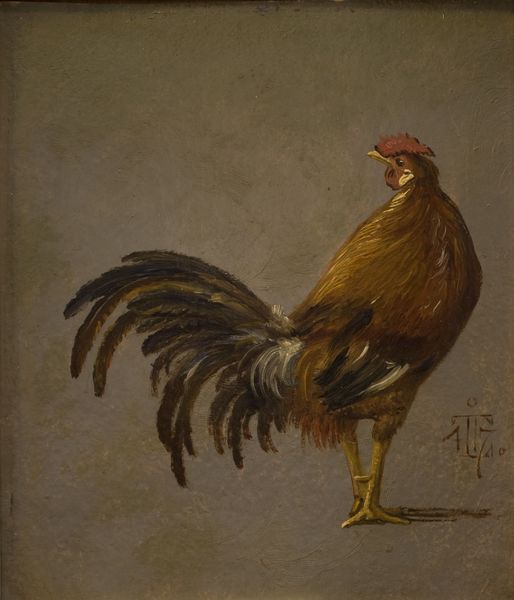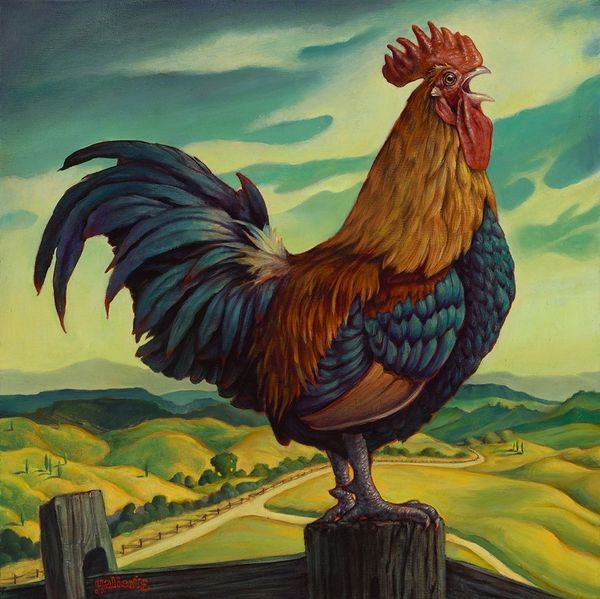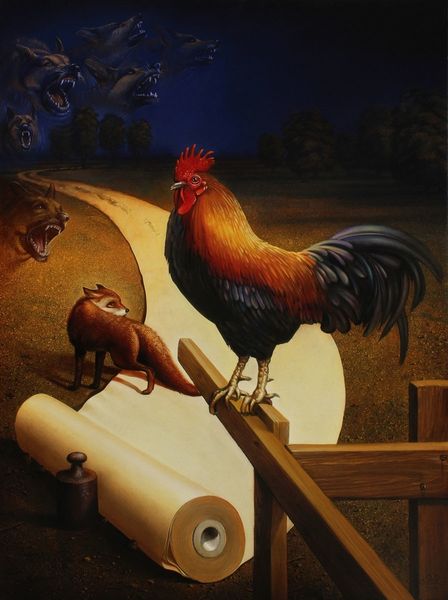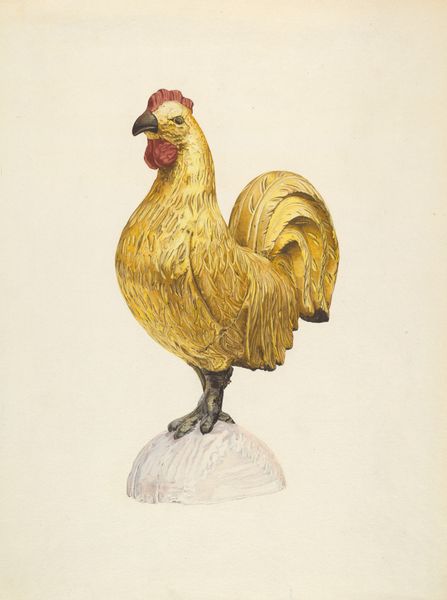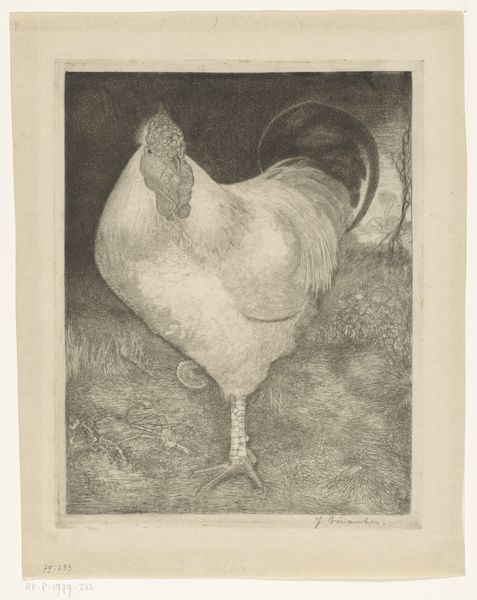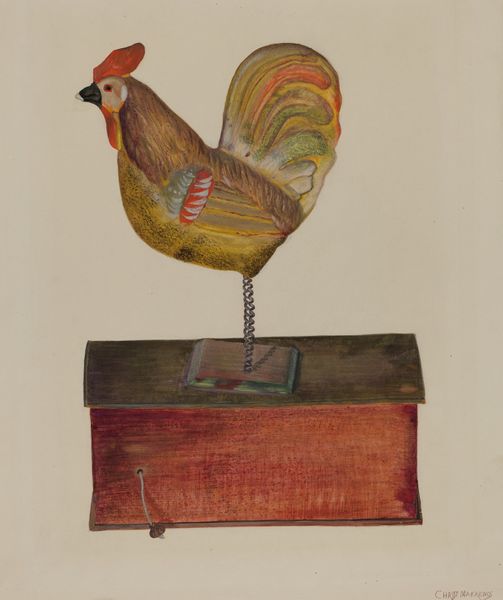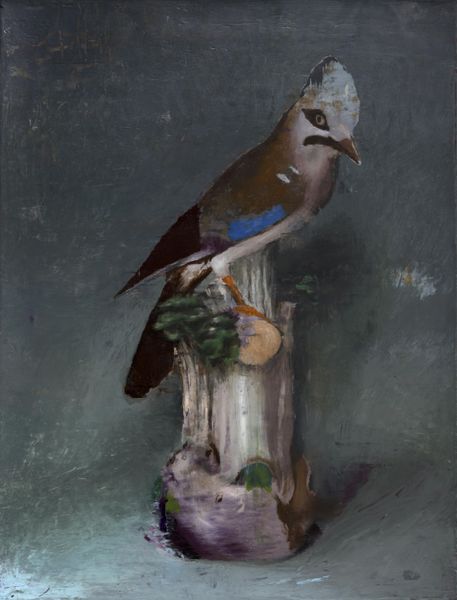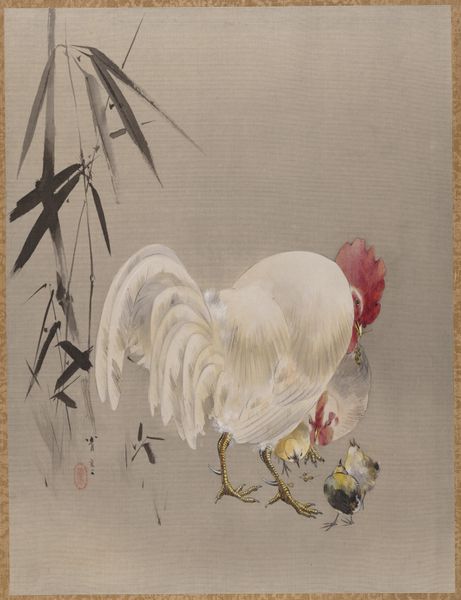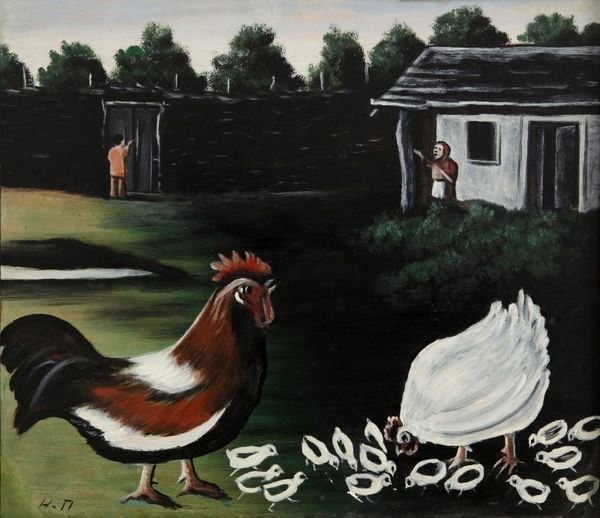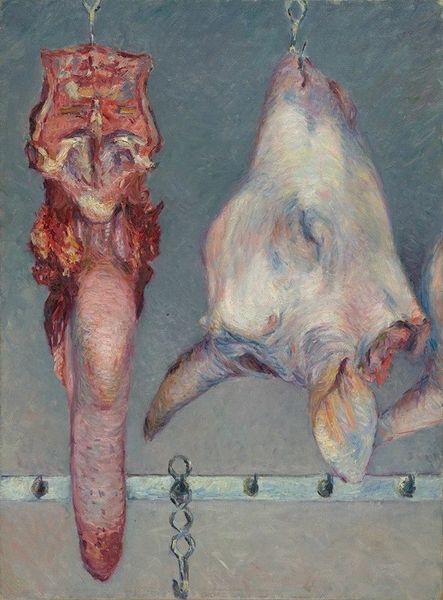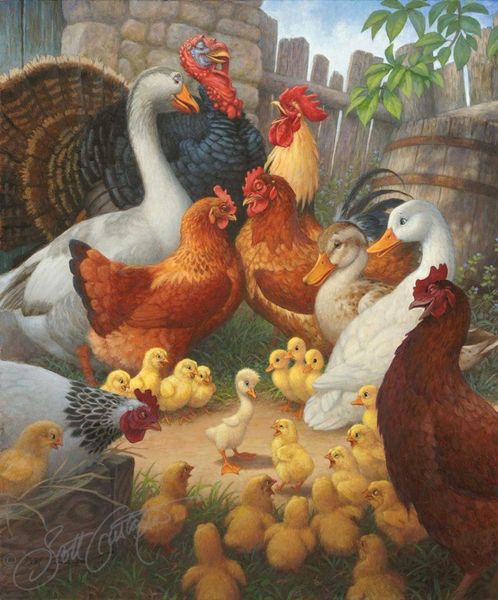
Copyright: Public domain
Curator: Looking at "Rooster (wyandotte) With Tin Dish" created by Jan Mankes in 1913. What springs to mind for you? Editor: Immediately, I see a somber scene. The rooster's creamy feathers and that simple tin dish possess a quality of being worn from daily use. It is as if everything has been faded by repeated actions over time. Curator: It's fascinating you mention "worn" because Mankes himself experienced considerable hardship and chronic illness. Consider how roosters function as potent symbols throughout history – often linked to concepts of vigilance and pride but also themes of sacrifice. Might his fragile health contribute to that melancholic resonance we both perceive here? Editor: Absolutely. Thinking materially, that dish, made from what seems to be basic tin, tells us something about the modest resources and realities of the artist or perhaps the subject. Tin suggests a focus on utility and durability—maybe Mankes saw an unspoken virtue in those simple aspects of existence, especially as they are embodied by the Wyandotte. What kind of domesticity are we looking at? Curator: Precisely. Mankes painted a close view of what he knew: quiet domestic settings and animals, a kind of gentle appreciation for the ordinary. That shade of grey, the dish’s hue, also echoes traditional symbolism with feelings connected to detachment, perhaps his withdrawal because of ill health and early death? The animal is more like a person in that respect. Editor: I am interested by your association between color and sentiment, as my take centers around how watercolor techniques contributed to the overall soft effect we're perceiving in this image—the textures created lend themselves beautifully to these somber interpretations through their subdued and layered application on possibly fragile papers, it highlights resource limitations whilst adding depth through materiality. Curator: I concur—there is great profundity. The animal turns towards the offering humbly, like it seeks communion with some higher meaning and the viewer cannot resist finding it too. What starts off looking basic turns quite grand in the realm of meaning. Editor: It started as a still scene but becomes very telling regarding the context of its production; even a portrait, showing life within basic boundaries takes on layers from the time it was made until now. Thank you. Curator: It gives insight on the fragility of symbols, their making, and unmaking in the landscape of time and our minds.
Comments
No comments
Be the first to comment and join the conversation on the ultimate creative platform.

